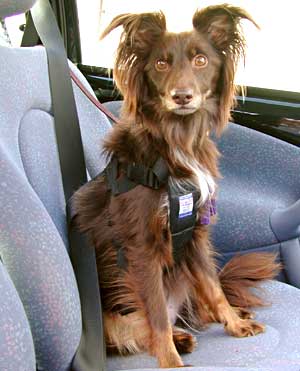
When you get assigned to weekend call as a chaplain at Baptist Hospital, you are responsible for Pastoral Care needs from 8PM Friday night until 8AM Saturday and then again from 4PM Saturday until 8AM Sunday morning. I was on such an assignment this weekend and had perhaps the busiest weekends of call I’ve ever had. But nevertheless it is a good example of the kinds of work we do in terms of crisis response.
Without getting into too much detail (and violating the privacy of our patients and their families), Friday night at 9PM I was called in and didn’t finish until 4:30AM. I worked with the families of two trauma victims flown by helicopter (Med-Flight) to our hospital from scenes of accidents, one “code-blue” patient (either their heart or breathing have stopped and the staff is attempting to revive them), one brain dead patient whose family was continuing to arrive, and two deaths. Saturday night I was called at about 7:10PM and came home at 9:15 for thirty minutes before getting called back and staying until 3:30AM. Last night I worked with the families of two Med-Flights, the same brain-dead patient, and one other death.
People often ask what exactly that we do as chaplains in situations such as these and that’s difficult to explain in detail but it can mostly be summed up by our being present with families in crisis. At times we pray with and for patients and families, at times we help people know what to expect when their family members are coding, or have died. Other times we act as liaisons between medical staff and patients. We sit with husbands of wives who have been whisked away into emergency surgery in the middle of the night. We walk with grieving mothers who can’t bear being confined in small rooms laden with news of death. We listen to mothers exclaim their raging incomprehension at the meaninglessness of a bullet inside the heads of their sons (twice this weekend, actually). We look on with helplessness as a mother learns that her baby did not survive the accident* and she groans in incomprehensible pain. Today I am glad the baton of “call” has been passed to another chaplain as I am exhausted physically and emotionally, but knowing what its like to feel alone in the midst of the fear of a medical crisis, I’m glad I was able to be there for these people this weekend.

* I spent a few extra minutes this morning making sure Eleanor’s car-seat was properly configured. Perhaps this is making me a bit paranoid but I don’t want any of my friends with babies to go through what I saw last night. Here are a few notes (courtesy of Melody) on car seat safety.
A Few Notes on Car Seat Safety
- The safest place for a baby is the center of the back seat. Never put a car seat in a front seat with an airbag.
- Watch weight and height limits. If the baby’s head is within an inch of the top of the car seat, the seat is too small.
- The carrying handle on infant car seats needs to be locked down (not above the baby’s head) when driving. The principle at work here is that in an accident the seat will flip up towards the back of the car, creating a kind of safe, shell of hard plastic around the baby, covering the top opening. If the handle is up it will interfere with this protective action.
- The little plastic clip that holds the straps together should be at armpit level.
- For rear facing babies, the straps should be at or below the shoulders. For forward facing babies/children, the straps should be at or above the shoulders.
- An infant is safest when facing the rear. To protect little neck muscles, keep the baby facing the rear for as long as possible. One year AND 20 pounds is the minimum for turning them around.
- If the seat can move an inch in any direction after installed, it is not installed properly.
- The straps need to fit snug on the baby. If you can pinch it together, it’s too loose.
- http://www.aap.org/family/carseatguide.htm for more information

1 comment:
Thanks for the carseat safety tips.
Post a Comment